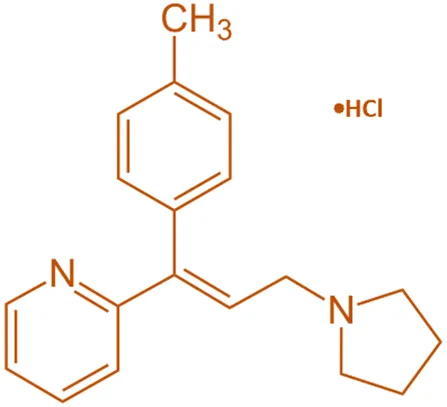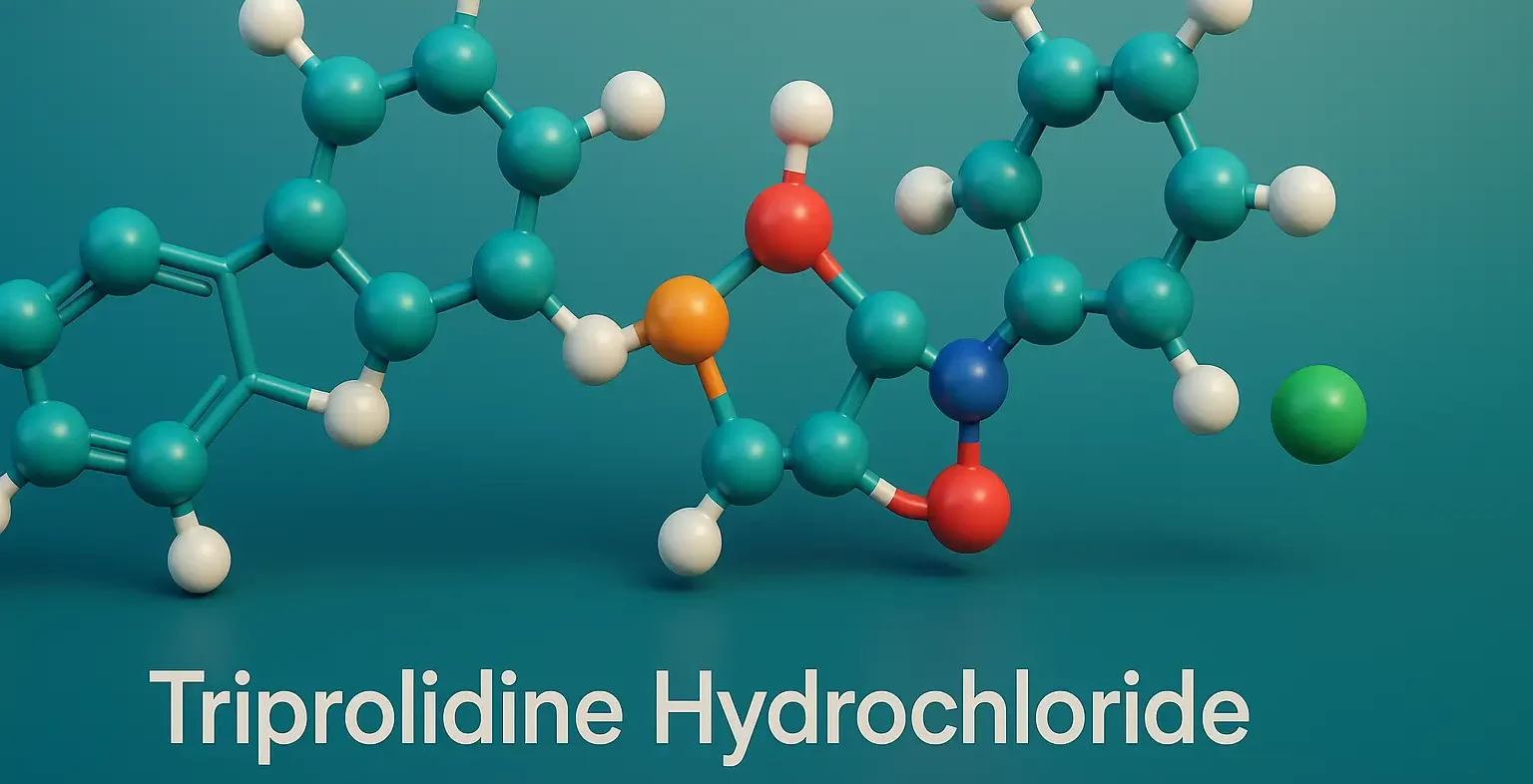Structure of Triprolidine Hydrochloride

- Triprolidine features a piperidine ring substituted with a dimethylamino group and a propyl chain linked to a benzene ring.
- The hydrochloride salt enhances solubility.
- Chemical Formula: C₁₄H₂₀ClN₃·HCl
Mode of Action
- Acts as an H₁-receptor antagonist with anticholinergic and sedative properties.
- It inhibits histamine-mediated allergic responses.
Uses of Triprolidine Hydrochloride
- Allergic rhinitis
- Urticaria
- Cold symptoms
- Cough suppression
Structure-Activity Relationship (SAR)
- Aromatic Rings: Facilitate binding to H₁ receptors through hydrophobic interactions.
- Dimethylamino Group: Enhances affinity for H₁ receptors and contributes to CNS effects.
- Propyl Chain: Increases lipophilicity, aiding in receptor binding.
- Piperidine Ring: Provides structural rigidity necessary for receptor interaction.
Synthesis

Click Here to Watch the Best Pharma Videos



